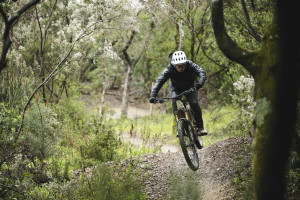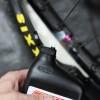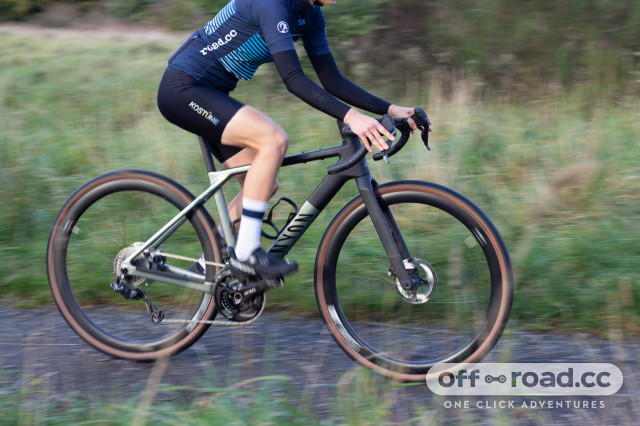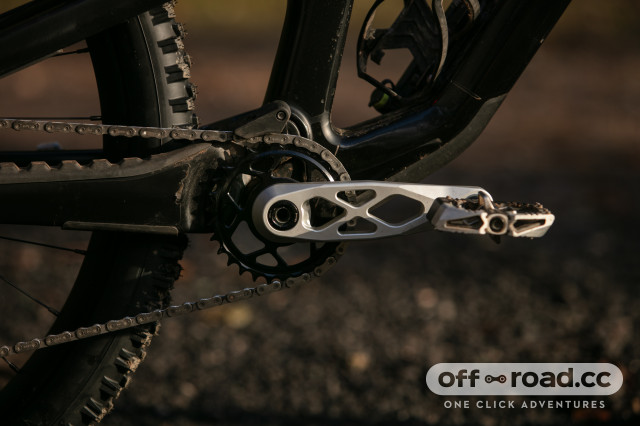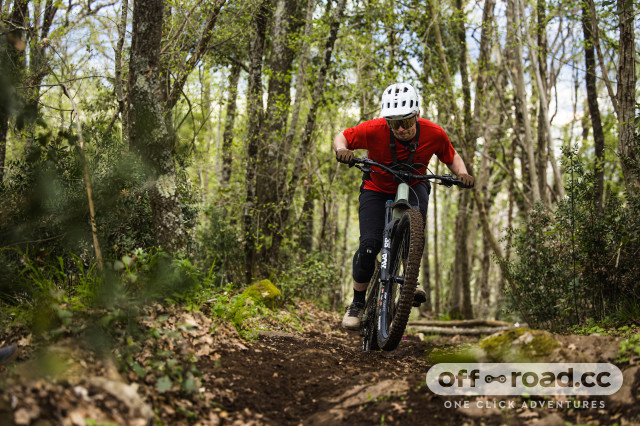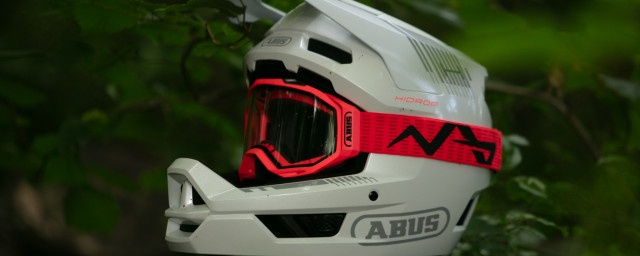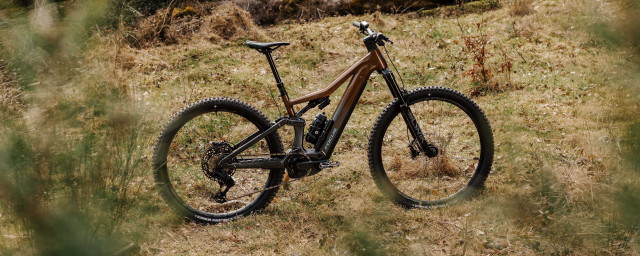Are shorter MTB cranks really better?
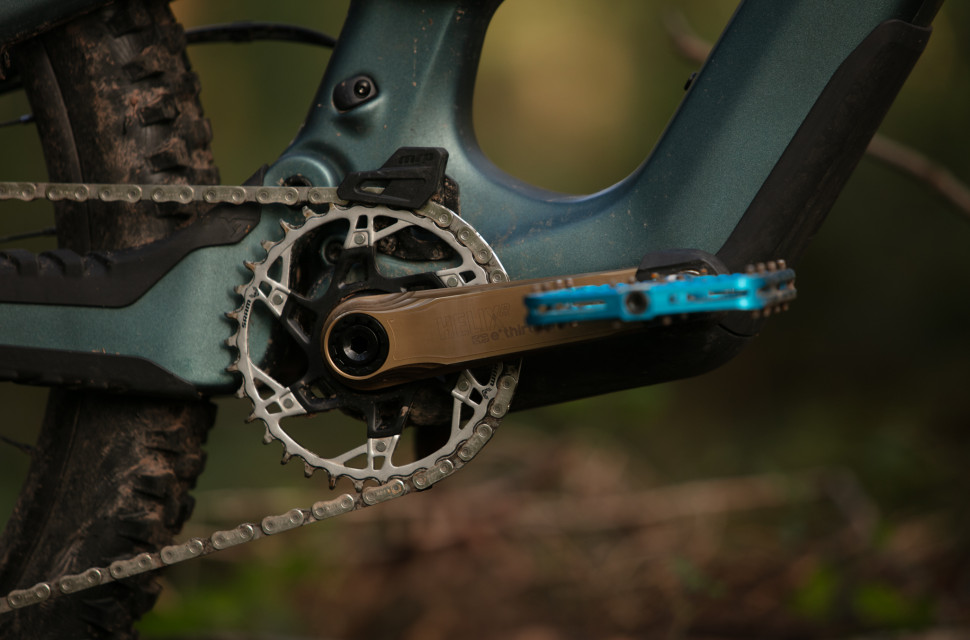
Crank length is a topic that’s often overlooked outside of the peloton. But it is being spoken about more in the off-road communities with brands such as Hope and 5Dev, to name just two, offering shorter cranks to the masses. As I’ve been using 170mm cranks throughout my riding career, I decided to see if there was any substance behind choosing shorter cranks, and here’s what I found.
- 7 of the best mountain and gravel bike upgrades for less than £50
- How to replace and upgrade your threaded bottom bracket
- What is the best crank length for off-road cycling?
The conversation of crank length and mountain biking is one of the gifts we’ve received from e-mountain bikes, and perhaps there has been some permeation from road cycling. But on e-MTBs, short cranks provide more pedal clearance and, because most of the power production is achieved with the help of a motor, riders began to notice more benefits to dropping some millimetres.
Why isn’t crank length spoken about enough?
Bike fit is important, roadies take it incredibly seriously as they’re riding in a fixed position for kilometre after kilometre – and crank length plays a real part in the story of bike fit in general. For us mountain bikers, we’re rarely riding in one position for nearly as long as the roadies and, with a more dynamic riding style being typical, niggles and pains that’ll arise when riding in one position for so long can be hidden and ignored.
From there, it’s often a case of trial and error or simply putting up with it. There are also a range of factors, such as stem length, bar height and saddle position, which can all affect comfort and performance.
However, cranksets aren’t cheap. Where a stem can be picked up for £50 for experiment’s sake, buying a crankset requires a more serious outlay. They’re also more complicated to install as they’re rife with varying standards and confusing numbers that must be considered to make sure everything fits together. So it’s understandable riders just keep the stock crankarms without exploring the benefits that shorter options might provide.
Crank length doesn’t affect power output all that much unless at the extremes, says science
More leverage means more power, right? That’s what makes sense, and that is a reason why many don’t want to change crank length, but that’s not exactly the case, according to science.
There has been a bunch of actual scientific research into crank length and power output. Many of these studies have used groups of cyclists on static bikes using a range of crank lengths at certain cadences with many showing negligible loss of power between lengths unless at the extreme ends of the spectrum. A reasonably well-known study is Determinants of Maximal Cycling Power: Crank Length, Pedaling Rate and Pedal Speed by J.C. Martin and W.W. Spirduso, published in 2001.
This study used 16 cyclists on static bikes and used a range of 120 to 220mm crank lengths. It found there’s a significant difference in the power produced while using 145mm to 170mm cranks versus 120 and 220mm cranks, with the former producing more power. It was also found that the optimal pedalling rate and speed occurred with 145mm and 170mm cranks.
However, there is an impact on leverage. When speaking to 5Dev, a serious advocate for shorter cranks, it was recommended that I reduce my chainring size by two teeth per 10mm reduction in crank length. Naturally, this compensates for the reduction in leverage and speeds up cadence. Hope suggests the same.
But they pose a difference in pedalling characteristic
I’ve ridden 170mm cranks for as long as I can remember but this topic has stuck in my head since riding the YT Industries Decoy SN that comes with 160mm cranks out of the box. Since then, I’ve been running a pair of 5Dev cranks of the same length on my personal bike and I’ve seen some differences.
The most immediate of these is how the bike feels to pedal. Because I’m not topping out as hard at the highest point in my pedal stroke, I can apply power throughout more of the pedal stroke. I’m still bottoming out as my legs reach full extension, but because they’re not bending so much at the top of the stroke, I can put more power into the pedal stroke sooner – input feels more immediate.
Of course, the advantage is pedal clearance. Particularly important during technical climbs, whacking pedals against trail obstacles isn’t something I’ve had to think about nearly as hard as with longer cranks. This is a real benefit in its own right and a key reason why we’ve seen shorter cranks of e-MTBs throughout the years.
It’s not all about the ascents
I found real benefits when descending. When sprinting into a trail, or over flatter bits of the downhills, I’ve been able to put the power down more consistently, again because I’m not rotating my feet and bending my knees as aggressively throughout the pedal stroke.
But also because there’s not as much distance for my feet to rotate around, and because my feet are closer to the bottom bracket, I’ve noticed a clear improvement in my cornering technique. It’s been easier to drive the bike through berms but dropping the outside foot is faster. Owing to the fact my feet are closer together, I’ve been able to hold a more solid, yet dynamic stance when leaning the bike underneath me.
Then, because my feet are closer together and the pedals level, shorter cranks have resulted in a taller stance over the bike. Not by much, but this is a two-part benefit in the way that my weight has been better distributed over the bike and I’ve felt a lot more confident in getting my chest low over the handlebar to weight the front wheel, which then has a knock-on effect to that cornering technique I mentioned before.
Finally, because my legs aren’t as pre-bent as with longer cranks, I’ve benefitted from a greater range of motion in them, as I’ve been able to stand taller on the bike, which has noticeably reduced fatigue when descending.
Are there any downsides?
Downsides are few, after all, cranks are still cranks – they effectively do the same thing but pedalling cadences are higher. The speed at which you rotate your pedals is incredibly personal and can be key for extra performance. If that is a concern, we recommend seeking a professional bike fit, which will pay back dividends in finding the crank length best for you.
And that rules of going down two teeth on a chainring per 10mm reduction in crank length can only go so far. So if you need to go any shorter with your crank, you will notice the effects of lesser leverage much more.
Lesser leverage is the main downside here and that's the most noticeable at very slow speeds, so steep and very technical climbs. Less leverage has a knock-on on effect to acceleration at these speeds. You won't notice this as soon as you're up to speed but if you're in a hard gear, either setting off or just cranking up a nasty hill, you'll find that you need to put more effort into the pedals to get rolling. Over longer distances, this could increase fatigue if that distance includes a lot of slow speed, high effort sections.
Lastly, it’s not an easy thing to experiment with. As I mentioned before, cranksets aren’t the cheapest of MTB upgrades and they can be rather involved when it comes to installation.
